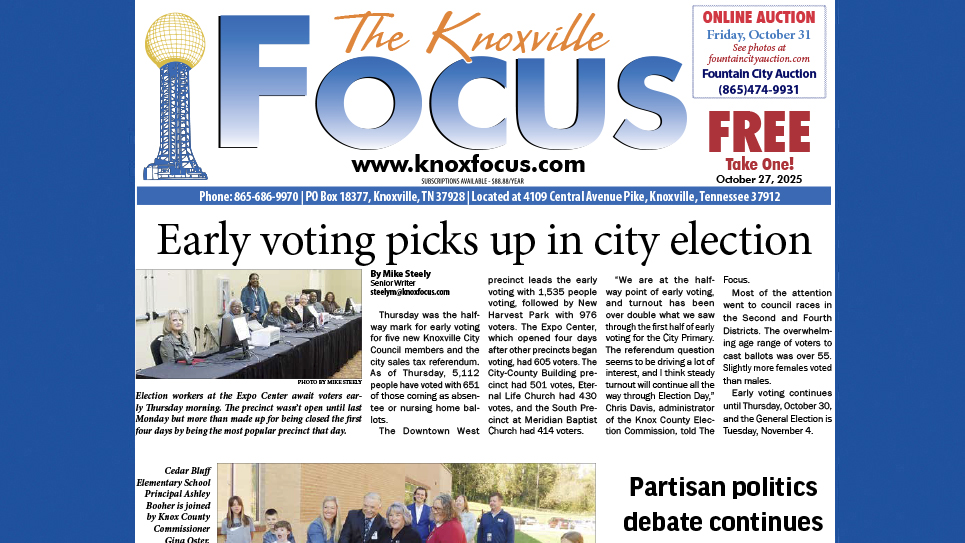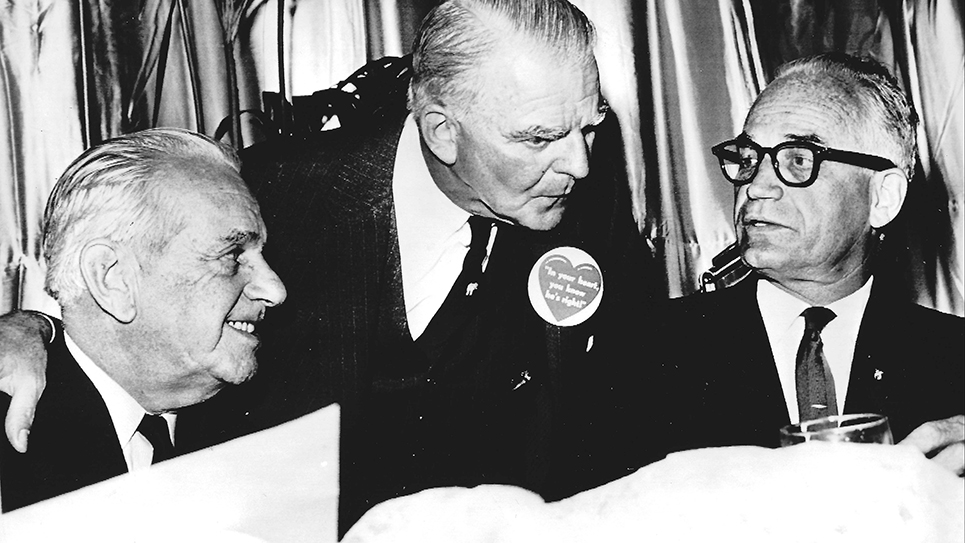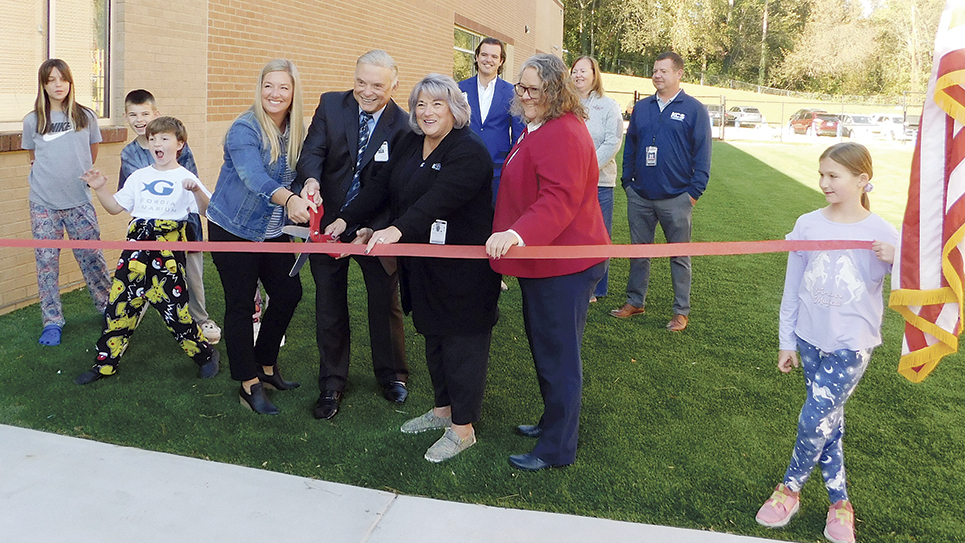By Sally Absher
sallyabsher@knoxfocus.com
One of Knox County’s best kept secrets is the Community Schools program. As the battle between public schools and the corporations that wish to privatize them heats up, this article provides the background and philosophy of the Community Schools Initiative in Knoxville. In coming weeks we will highlight three of the schools, and their communities, to illustrate how this program fosters success – for the student, the family, and the community.
Community schools have been experiencing significance growth over the last 10 to 15 years as various reforms – from Clinton’s Goals 2000 to Bush’s No Child Left Behind to Obama’s Race to the Top – have done little to increase student achievement and close the opportunity gap for at-risk students.
The current trend of fixing “failing schools” with charter schools or vouchers is counter-productive. These solutions fail to recognize that it is not the schools, nor the teachers, that are failing. Generational poverty and the destruction of the family support system (through divorce, incarceration, etc.) have more to do with the student’s success or lack thereof than school-related factors. Taking a child out of his neighborhood school and putting him in a charter or private school for 7 hours a day does little to fix the challenges he faces during the other 17 hours.
Additionally, both charters and vouchers suck limited tax dollars out of the public school system, leaving fewer resources for those children left behind. Claims that “the money follows the child” ignore the fact that unless entire public schools are closed, the fixed expenses remain. In a county-wide system like KCS, students in Farragut or Hardin Valley will feel these effects as much as students in urban schools.
A better solution, used successfully in across the country, is the Community School Initiative, which works to enhance student academic success and to eliminate achievement gaps by meeting students’ basic needs. Using public schools as a hub for organizing community resources to improve neighborhood health and safety and student academic success, community schools focus not just on the student, but also the family, and the entire community.
The University of Tennessee piloted a community school partnership with Pond Gap Elementary in 2010. This is known as a “University-Assisted Community School” (UACS), due to the close relationship with UT. Pond Gap is one of the schools we will spotlight in coming weeks.
The success of Pond Gap caught the attention of former pastor, attorney, educator, and author Buzz Thomas, who in 2009 was appointed as executive director of Great Schools Partnership (GSP). The mission of GSP is “to serve as a think-tank, catalyst, incubator and start-up funder for making Knox County Schools globally competitive.” GSP has been instrumental in leveraging and/or creating programs including early literacy initiatives, the TAP Program, summer bridge programs for struggling students, teacher mentoring programs and more.
GSP launched three community schools in 2012-13: Green Magnet Elementary, Lonsdale Elementary, and Norwood Elementary. In 2013-14, the program expanded to include Christenberry Elementary, Sarah Moore Green Magnet Elementary, and Vine Magnet Middle, and this year South Knoxville Elementary joined the program.
A Site Resource Coordinator at each community school works to engage students, parents, community residents and school personnel to determine program and service needs and assets, and works with community partners to coordinate and facilitate the delivery of services through the community school.
Thomas explained some of the differences between UACS (Pond Gap) and the seven GSP community schools. Obviously, Pond Gap has a close relationship with UT, which the other community schools don’t have at this time. But he said that one of the goals Bob Ridel, Dean of the UT College of Education, Health and Human Sciences has, is for all of the community schools to eventually be university assisted, allowing the greatest leverage of resources.
Thomas describes Pond Gap as a partner, not a competitor, and adds “we have a warm, collegial, collaborative relationship with Pond Gap.” With more paid staff, they are able to do things that other schools can’t. GSP schools have one paid staff member (the site resource coordinator) and a part-time assistant, and therefore the focus is more on aligning community resources.
GSP community schools also have a site steering committee comprised of parents, teachers, and community leaders at each school. Thomas says this is key secret to success of the community school – because each school, and each community, is unique. For example, the Lonsdale community has a high number of Spanish-speaking families, so they offer ESL classes for parents.
But there are many similarities between the UACS and the GSP programs. Common characteristics include family, partner, and community engagement; expanded learning opportunities; health and social support; youth development activities; and tutoring and academic enrichment. The school facility is open for extended hours, and a variety of adult classes and workshops are offered.
Stephanie Welch, VP of Operations for Community Schools, brings her background in public health and nutrition to the GSP program. Promoting physical activity and nutrition is a priority for Welch, and she cites the Kids Can Bike, Walking School Bus, NEAT (Nutrition Education Activity Training), and community gardens among many other programs offered at GSP community schools. She has been instrumental in bringing partners in to implement these programs.
Thomas describes community schools as “the smartest strategy to come down the pike in a long time, for not just student success, but for family and community success.” But a big part of his job is raising money. It costs from $120K to $140K per year for each community school.
GSP provides a site coordinator and assistant at each school, meals at some schools, transportation, security, and tutoring. KCS helps with meals, transportation, and security. Mayor Burchett provides $600K, and Mayor Rogero hopefully will provide $2-300K this year. Covenant Health is GSP’s angel capital donor, giving $150K per year. GSP is in conversations now with Tenova. Other partners include Boys and Girls Club, YMCA, and Knoxville Parks and Recreation, who provide on-site after school care.
The benefits are many. With parent, neighborhood and partner input and involvement, community schools can be a positive center of influence to benefit students, families, and the surrounding community. Research indicates that these benefits include improved student learning, health, and attendance; stronger family engagement; an improved school climate; and safer neighborhoods.
As Buzz Thomas said, “You don’t improve the public water supply by investing in Perrier, and you don’t improve public schools by funding private schools.” Voucher-supporting legislators, take note.






